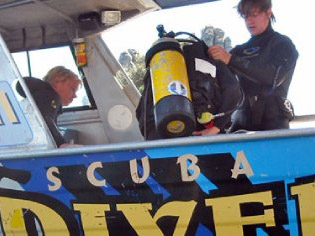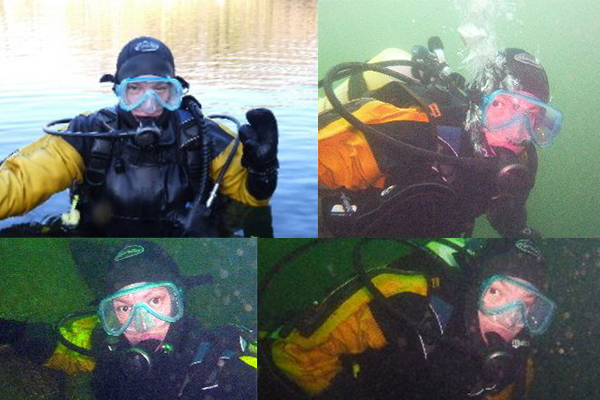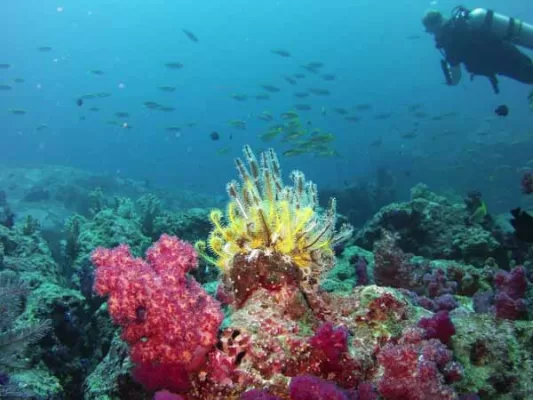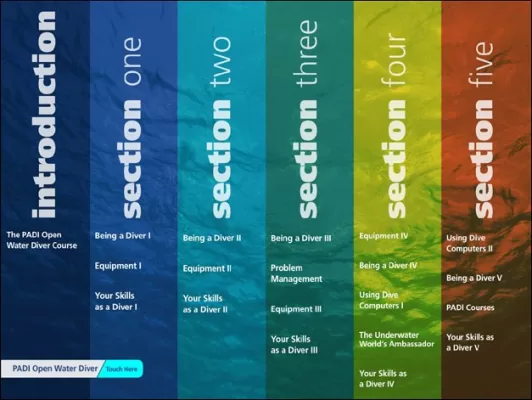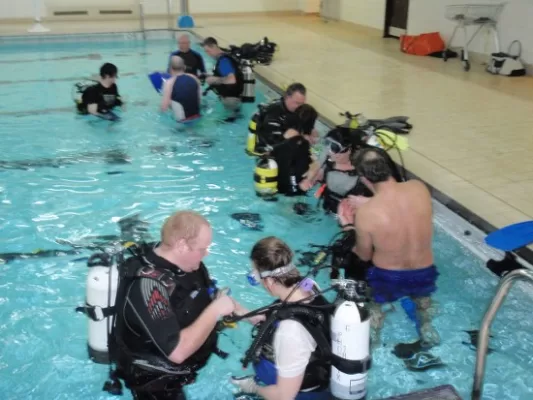Learning Buoyancy
We spent 3 weeks diving on Koh Tao after our trip to New Zealand. For me it was the greatest learning experience for my diving. We dived at least twice every day, and had enough time to really build confidence and competence.
It was during this time that I finally came to understand buoyancy and learned to dive neutral and horizontal, rather than vertical and bicycling. Buoyancy is one of those things that is really difficult, until the lightbulb moment when you ‘get it’. And then you wonder just what was so hard about it!

This was also the time that I completed my first dive of 60 minutes – diving neutrally buoyant and relaxed did wonders for my air consumption 😉
It was also when I saw my first baby shark, up close and personal.
Towards the end of our 3 weeks, we were ready to learn more. There was a trip advertised to a wreck site, that required both Deep and Nitrox to go. We didn’t have either, but realised that there would be other trips in the future that would require more training than we had, and it seemed like a good time to take that next step.
Deep and Nitrox Specialties
We booked to do our Deep and Nitrox together, as the dive shop offered a discount, and a young instructor was assigned to us. For the Nitrox course there was another couple joining us, and we spent the day in the classroom. Gary never lets me forget that this is the only exam that we’ve both done where he got a higher score than me – he got 100% in the exam, and I got 1 answer wrong.
When it came to our deep dives, we had various skills to complete, and the first 2 dives were on Nitrox to complete that course.The other couple joined us for these dives, and then we had a day on our own with the instructor.
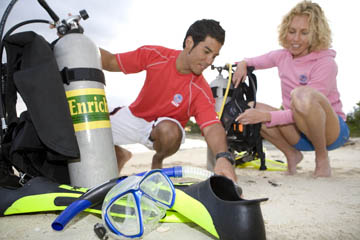
We noticed that our instructor was not completely comfortable on the dive where we had to go below 30 metres. The specialty allows you to go down to 40m, but we went to 34m. This is within PADI standards which give a maximum depth of 40 metres and allows for the instructor to make a judgement call on the depth, based on the conditions. Given her obvious discomfort at depth, going to 34m rather than 40 was the sensible call, but we were a bit disappointed.
Getting Tangled
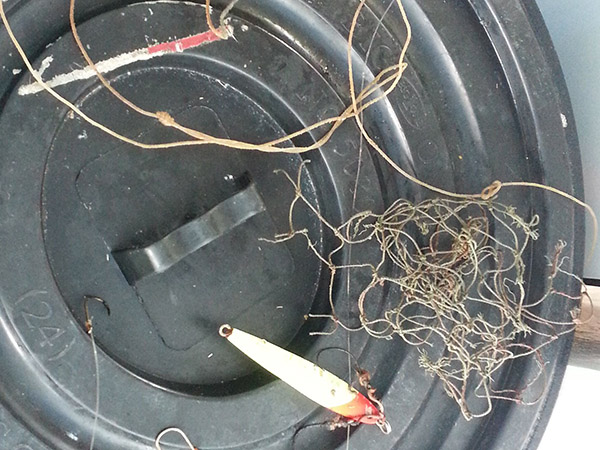
Coming back up, she was in such a hurry to ascend, that she swam straight into some discarded fishing line which caught on her snorkel. She then turned several times to try and free herself, getting the line more twisted around her snorkel as she did so. Gary and I realised that she was caught up, and between us we untangled the line from her snorkel, located the 2 ends along the reef and collected it in.
Our instructor was new, and fairly inexperienced. She had only ever dived on Koh Tao. With her discomfort at depth, she probably shouldn’t have taken our course, but the competition for work on Koh Tao is so great, that she probably felt that she couldn’t turn it down. She wasn’t in any serious danger, and she wasn’t panicking, but neither was she comfortable enough to deal with any problems that we might have had, which is a greater concern.
What did I learn from this time in Koh Tao?
Buoyancy is the key to diving – many people want a quick course to learn to dive, but there is no substitute for mastery, and sometimes that takes time. It took me 30 dives to fully ‘get’ buoyancy, and many more before it became instinctive. Give yourself time to master it, it will come with practice.
Not everyone is comfortable going deep – and that’s ok. Experience expands our comfort zones, and you should take your time to get that experience.
If you are a Divemaster or Instructor and you personally are not comfortable in the conditions, you should not be leading that dive or course. You have a responsibility to the people you are looking after, and safety, not peer pressure or financial pressure should be the factor in your decision.

